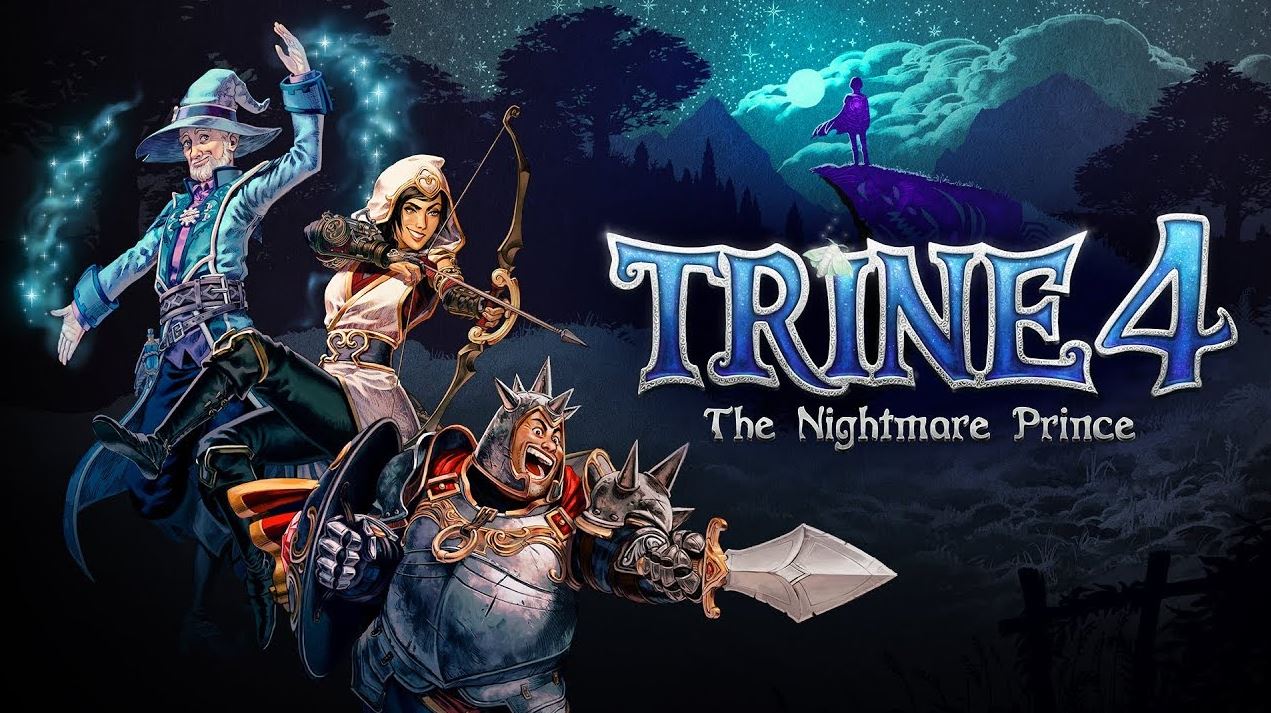
Though the Trine franchise is beloved by many, the series stumbled a bit with its previous title, Trine 3: The Artifacts of Power. Frozenbyte meddled with the formula a bit too much and tested the waters by including perspective shifts that turned the game into a 3D platformer, to mixed results. Its also clear that the experimentation diverted resources away from other segments of the game, leading to an unsatisfying experience that ends abruptly and didn’t feel like a complete game. Luckily, Frozenbyte turned this into a learning experience, and returned to the drawing board to deliver a more traditional and proper Trine game for Trine 4: The Nightmare Prince. The result is a game that might not take many risks, but instead doubles down on everything that made the first two games so successful.
Trine 4: The Nightmare Prince
Publisher: Modus Games
Developer: Frozenbyte
Platforms: Windows PC (Reviewed), PS4, Switch, Xbox One
Release Date: October 8th, 2019
Players: 1-4
Price: $29.99
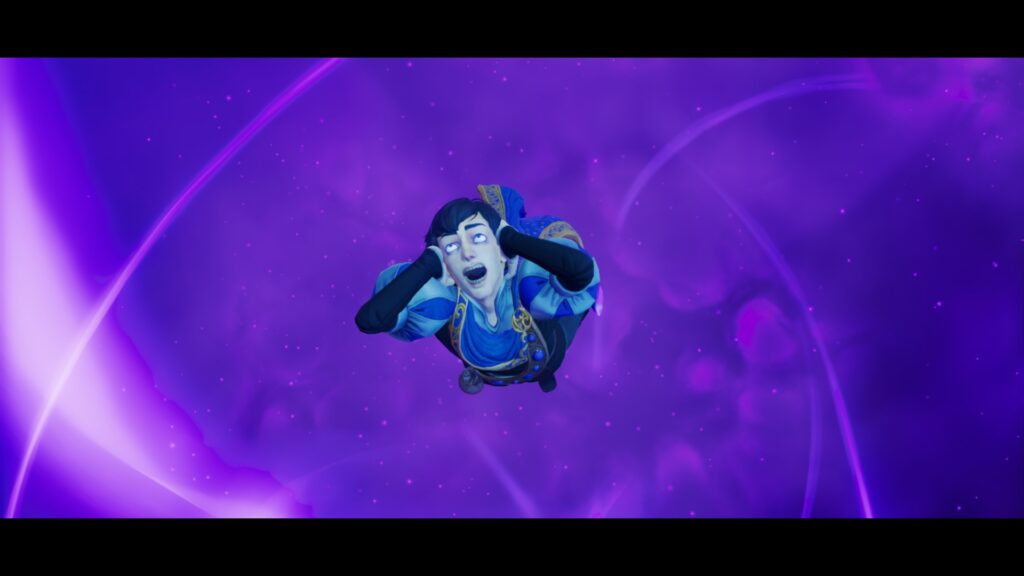
Trine 4: The Nightmare Prince is perhaps the longest game in the franchise, and once again reunites Amadeus the Wizard, Pontius the Knight, and Zoya the Thief for another adventure through magical locations filled with puzzles and the occasional battle against the forces of evil.
This time around, they are contracted by the Astral Academy to track down Prince Selius, a troubled young man that has the uncontrollable ability to make nightmares become real. The prince is tired of being locked away in the Academy, but unfortunately his powers are causing chaos wherever he goes, creating shadowy monsters based on the deepest fears of himself and everyone around him.
As with the previous games, Trine 4‘s story doesn’t take itself overly seriously, and compliments the game’s gorgeous environments, flowery writing, and mesmerizing musical score to create a whimsical and overall lighthearted fairytale experience.
Trine 4 is the most visually stunning installment in a series already renown for its enchanting environments, and will take you through lush forests, haunted mansions, decrepit palaces lost to time, rundown gardens, and surreal dream worlds. Many of the game’s backdrops would make lovely desktop backgrounds, offering players a fantastic view into the game’s expertly crafted fantasy world.
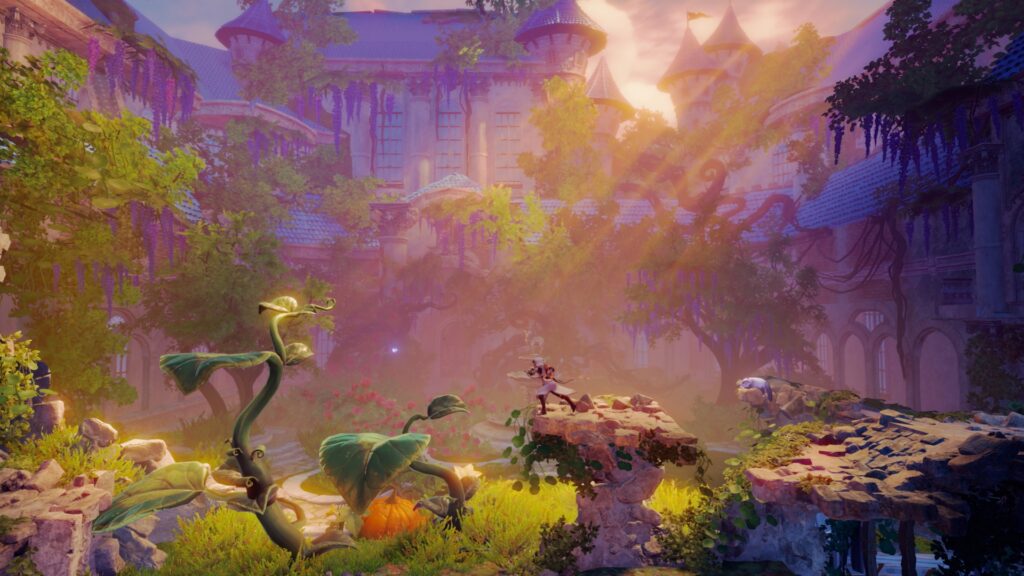
The star of the franchise has always been Trine‘s semi-open ended physics-based puzzles, and Trine 4 is no exception. The puzzles and platforming make up the majority of Trine 4‘s moment-to-moment gameplay.
Amadeus, Pontius, and Zoya come equipped with plenty of tools to handle the job. Many old favorites return, including Zoya’s grappling hook and Amadeus’s crazy arsenal of levitating boxes, spheres, and planks, but there’s a few new toys to play with as well.
Pontius can now summon a “dream shield” that floats wherever his shield once was, and this ability plays a vital role in puzzles based around reflecting light and diverting water flows. Amadeus, meanwhile, has a bouncy sphere that is of dubious usefulness, but hilarious to employ due to the franchise’s occasionally kooky physics mishaps.
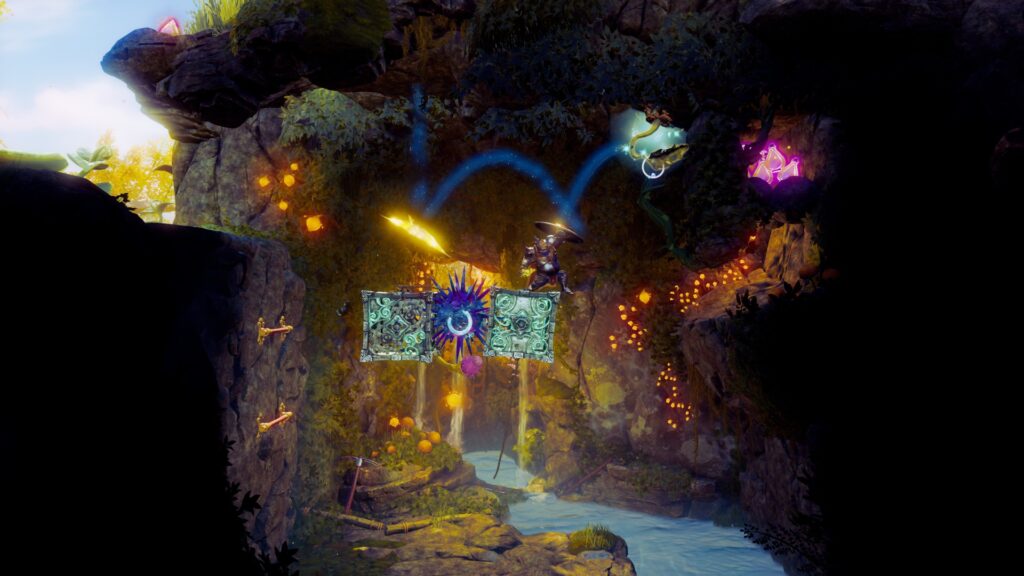
Each character starts with a small selection of abilities and gradually unlock new ones at key moments throughout the story. Amadeus starts with his signature box, while Pontius has his sword, shield, and a ground pound that serves as both a combat ability, and a means of using seesaws in conjunction with heavy objects to reach higher locations. Zoya brings along her trusty bow and grappling hook, which can also be used to tether objects together or as a tightrope over bottomless pits.
Along the way, you’ll unlock things like fire and ice arrows, the aforementioned dream shields, conjurable spheres and planks, the ability to summon two objects at once, and more. Many of the characters’ abilities unlock automatically as you play, but some side abilities are purchased with the game’s scattered collectables.
These include a lightning-infused sword for Pontius, the bouncy sphere for Amadeus, a dodge roll for Zoya, etc. These side abilities will help you on your journey, but never feel vital to the game’s puzzles or combat encounters. Either way, Trine 4 is quiet generous with its experience points, so you shouldn’t have much trouble buying new abilities at a fairly steady rate, ensuring that there’s no shortage of new toys to experiment with.
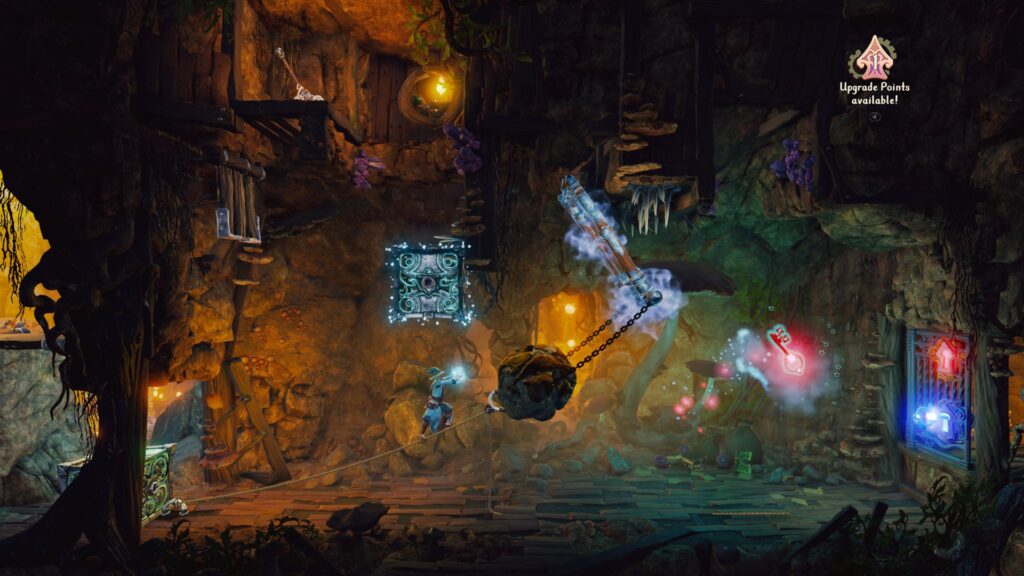
As with the previous games, most of Trine 4‘s puzzles have multiple possible solutions, and the wide variety of gadgets at your disposal allows you to get pretty creative and crazy. Unfortunately, most of them are also fairly easy so long as you remember what tools each character has available to them.
There were only a few puzzles that had me stumped for any significant length of time, and the solution normally came down to me being an idiot that forgot that I could use an ability in a certain way.
I can’t remember how many puzzles I would have solved much faster if I hadn’t forgot about Zoya’s ice arrows and their ability to freeze moving objects in the environment for a decent stretch of the game’s third act.
Still, even the simplest of puzzles in Trine 4 can be fun and satisfying to overcome due to the game’s unending charm. Even when I got stumped or realized I was drastically overthinking something, I never found myself frustrated or annoyed with the game. Trine 4 is simply too enjoyable to ever actually get mad at it.
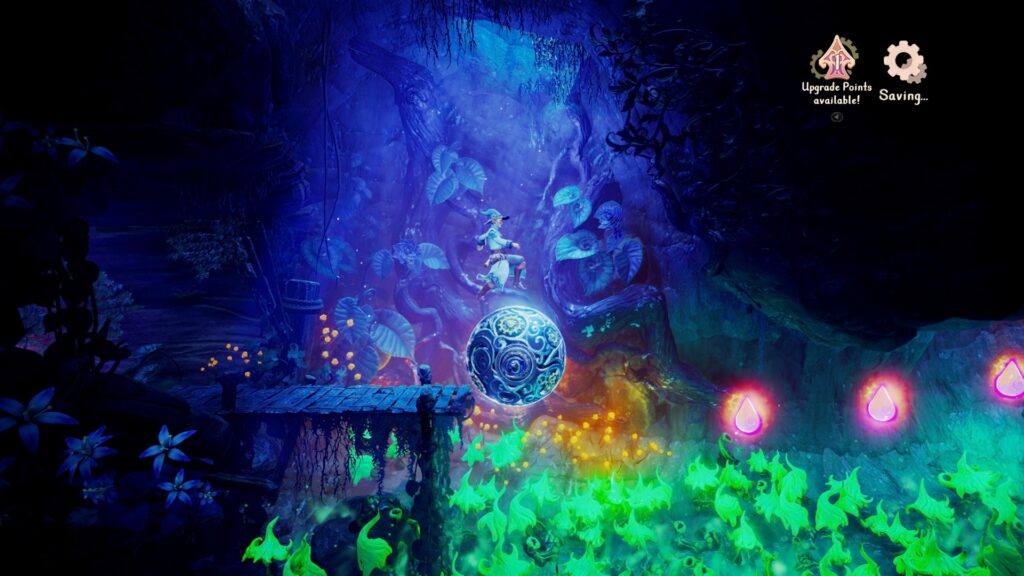
Each level has its fair share of secrets as well, be they hidden collectables or optional puzzle rooms located off the beaten path. The game’s puzzles are also different in co-op, and diverge even further.
Puzzle change up more if you are playing the more traditional three player co-op, or the newer and even more chaotic four player mode. Between co-op and the possibility of missed collectables, there’s a decent amount of replay value to be found in Trine 4.
Besides puzzles, the game features a few combat encounters scattered around each level. The combat isn’t especially engrossing or challenging though, which has always kind of been the case with this series.
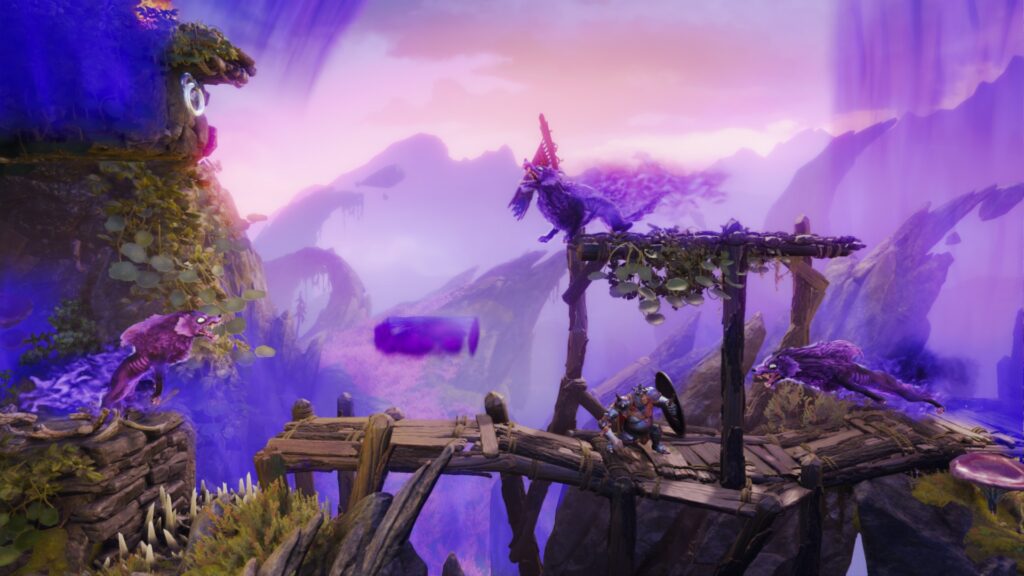
This biggest issue this time around is the general lack of enemy variety. Most of the enemies are either ghostly wolves or imp-like creatures with different ranged attacks, usually some type of bow or bombs. Occasionally, you’ll encounter larger and tougher wolves, or imps with tracking shots.
These two core enemy types make up the vast majority of the early game’s combat encounters. You do fight other things later on, like giant spiders, monster badgers, and evil hedgehogs, but even after these new creatures are introduced you’ll still mostly be fighting wolves and imps with ranged weapons.
The combat isn’t particularly difficult either, so if you want some challenge you’ll definitely want to play on a harder setting. The combat is usually brief and over in just a few minutes, so it won’t be long before you are back to solving puzzles and exploring the game’s visually stunning levels.
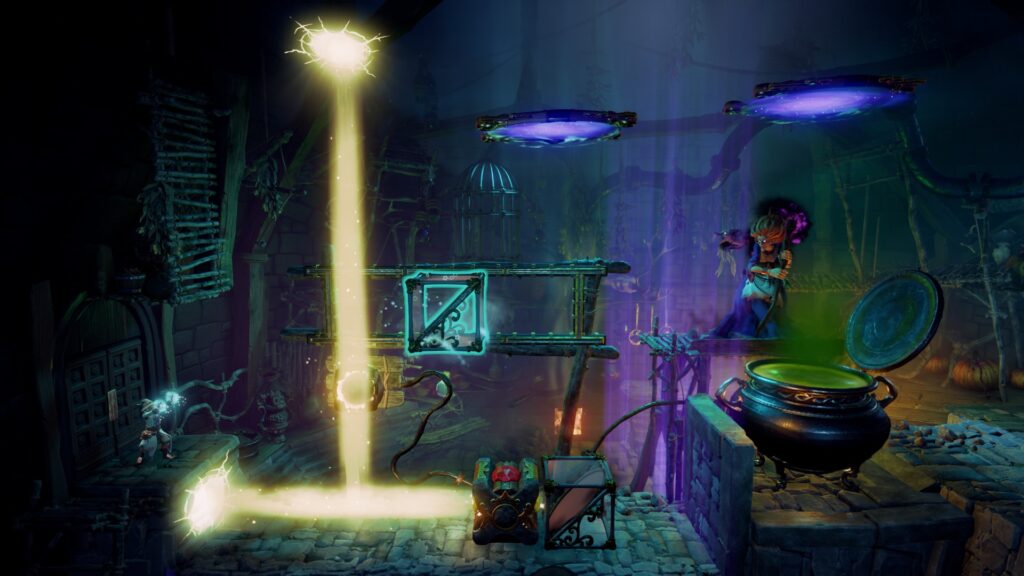
While the normal combat encounters are fairly drab, the boss fights are a fair bit more interesting, especially the ones that deal with the main characters’ own personal nightmares. Amadeus in particular has a cool puzzle boss encounter against the nightmare version of his dreaded auntie, who forces him to make potions while berating him the whole time.
This encounter revolves around manipulating objects to reflect light into her cauldron, and it was one of the more challenging puzzle segments in the game for my admittedly small and incompetent brain. The more combat-focused boss encounters aren’t especially difficult, but they are still far more interesting and varied than the standard fights.
Trine has always been a PC franchise first and foremost, and that doesn’t change with the fourth installment. The game controls equally well on mouse and keyboard or with a controller, though I must admit that highlighting a specific object with a controller can be a bit finicky. The demo build I played a few months back was already pretty well optimized, and the full game only got better.
My modest machine was able to play the game on ultra at 1080p without any frame drops whatsoever, and aside from the occasional bit of wonky physics, I never encountered any noticeable bugs or other issues. Unless you are playing the game on a literal potato, Trine 4 should look and play great with whatever your setup might be.

Trine 4: The Nightmare Prince is a wonderful return to everything that fans of the series loved in the first place. It doesn’t take any risks with the formula this time around, and instead just focuses on delivering a really solid new Trine game.
If you aren’t already a fan of the series, then Trine 4 probably won’t change your mind. If you love the series already like I do, then you’ll find a worthy new installment in the franchise that only occasionally stumbles in a few places here and there.
Trine 4: The Nightmare Prince was reviewed on Windows PC using a review copy provided by Modus Games. You can find additional information about Niche Gamer’s review/ethics policy here.